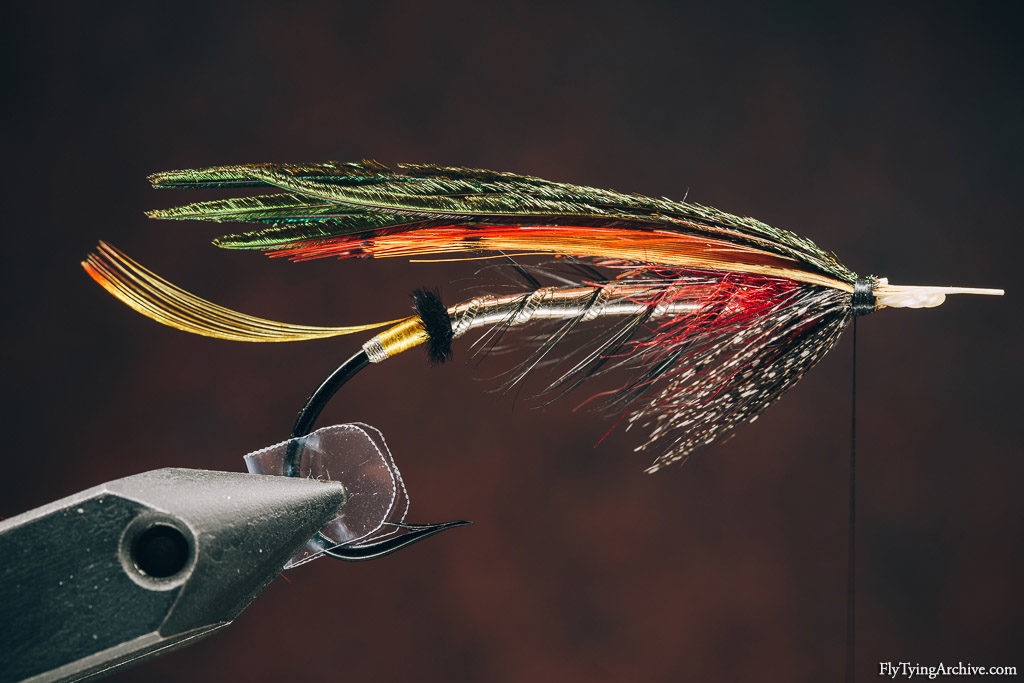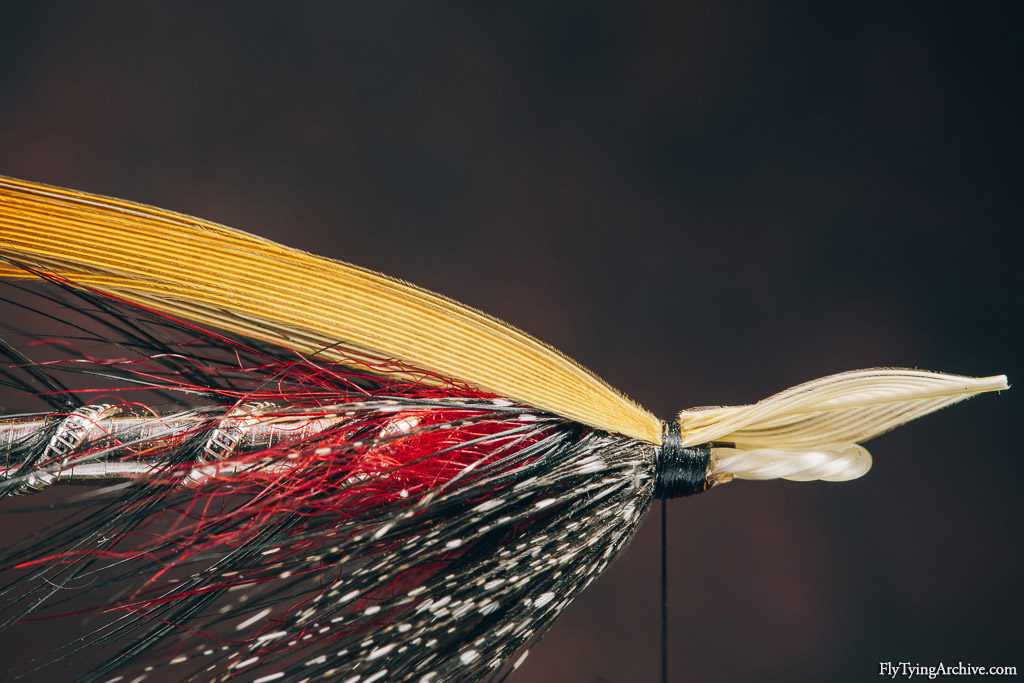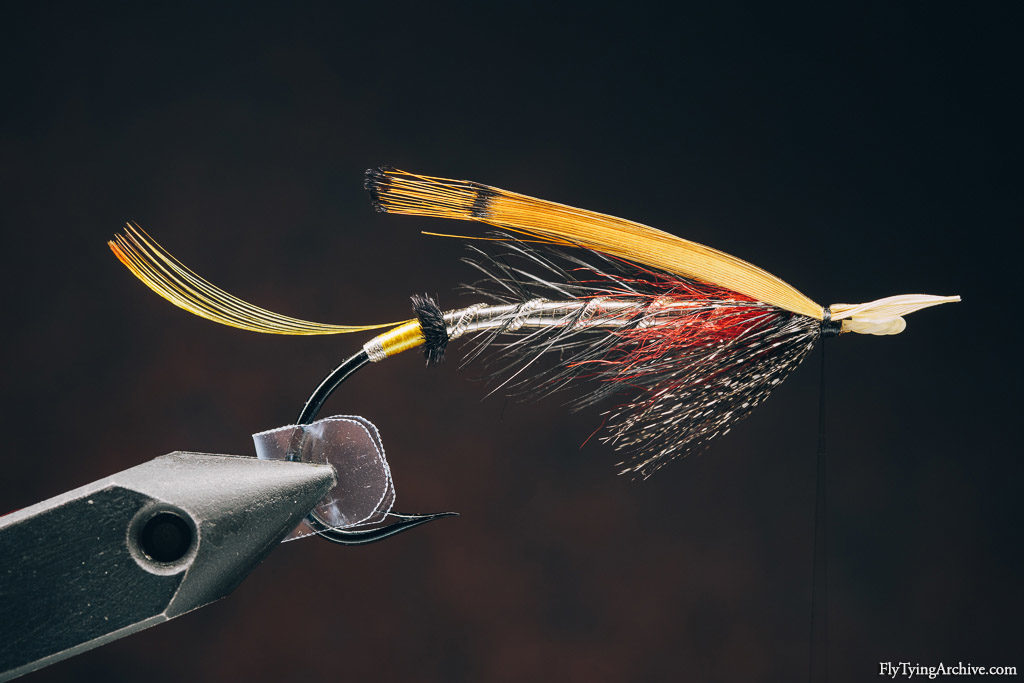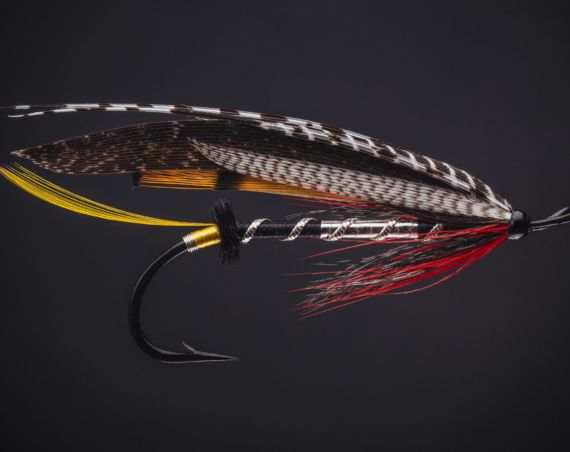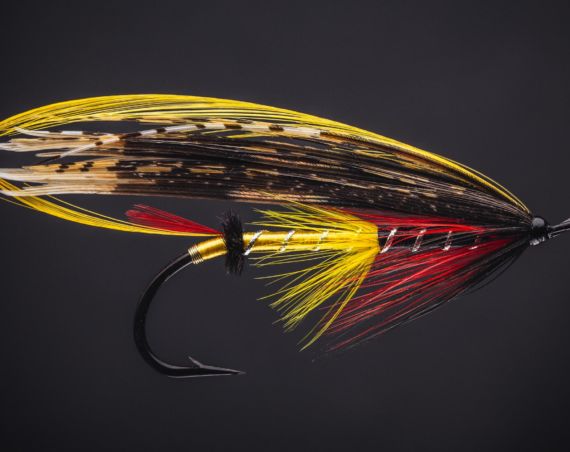Step by step of tying an underwing on the Lion.
There’s lots of ways to interpret a classic salmon fly pattern. Some have weird words used in them or things that seem not to make sense. If you have ever written anything you know that there’s also a big possibility for typing errors. Here I have broken down one way to interpret the underwing on the Lion published by Kelson in the Land and Water cards. You can navigate through the photos with the small arrows on either side of the photo. First lets look at the pattern.
Wings: Commencing with a few fibres of golden pheasant tippet, sword feather of the golden pheasant and peacock herl. Yellow macaw, red macaw, bustard, golden pheasant tail, teal, gallina ; with two strips of mallard above, and a topping.
OK, so lets start with the tippets. Usually I would tie them from full feathers back to back because I like the look and function of it, it’s also easier in a way than to tie the tippet in strands. But the pattern clearly states to tie just a few fibres. Now we could tie feathers back to back and cut the tips off and strip the top fibres and we would have a very neat underwing of just a few fibres still attached to the stems. However I wanted to do it with just the fibres and the easiest way to do it is to take the largest center tippet and cut a small section of it where the longest fibers are attached to the stem. The feather now forms a V. Tie it on top of the shank just in front of the stem tying in just the fibres, try to keep the fibers from overlapping or twisting. If the tippets kick up too much take them off and wrap more thread underneath to build a higher base, try to make sure that the base is flat and not sloping forward too much as this will kick it up more.
Next is the sword feather. Again usually tied with two feathers back to back but notice how the pattern speaks only of a feather. I’m not saying it’s ultimately a correct way but I tie it flat on top over the tippet strands. It makes sense fishing wise as I and many others try to built width to the wing to get better lift from the water with fewer materials. The sword feather pushes the tippet strands down a bit so take that in to account when tying the tippets.
Last part I’ll consider an underwing on this fly is the Peacock herls. To get them symmetrical you must take equal amount from both sides of the feather. I bring the fibers up against the tension of the thread fiber at a time to make sure they stay in correct order and don’t turn around. 3 on both sides is a good general rule. I also draw them do different length with the fibers on the center being longest. This method also brings width to the wing when in water as they are not on top of each other and tapering the fibers to different length makes them move more individually in the current.
Then it’s time to tackle the main wing. Mixed, married, built…? That’s a discussion we will return to some other day.


